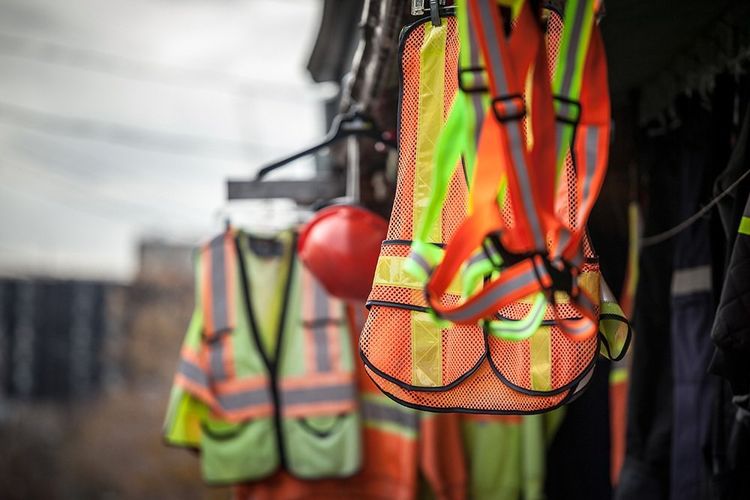CALL NOW! 419-698-1601 | 1-800-548-3398
Safety is a primary concern in the construction field, which is why annual safety inspections take place to ensure you follow standards. To get ready for your safety inspection, walk through your site regularly and look for problems in these five areas.
1. Personal Protective Equipment (PPE)
Everyone working on your site should have allotted protective equipment and should wear it when the site is open. Hard hats, safety goggles, steel-toed shoes, and respirators are all minimal PPE requirements for construction sites, so be sure that you have enough for all your workers.
Having enough materials to go around is a bare minimum, though. Look for visible signs of damage like dents and cracks in your hard hats or loose lenses in your safety goggles. Respirators can be damaged easily as well, so look for filter tears or deteriorated elastic in the straps.
2. Equipment and Tools
You'll have a lot of moving pieces on your construction site, but that's all the more reason to keep a close eye on every one of them. If your crew works with a backhoe without a back-up alarm or an electric drill with a fraying cord, you will be liable for any injuries that may happen as a result. Inspect frequently for loose pieces, broken or cracked windows, fluid leaks, and other signs of wear and tear.
Whatever electrical tools you utilize at your site, you'll have to maintain them consistently and check for defects. Any time someone uses an electric tool, they must ground the tool appropriately and must wear PPE that insulates them from possible electrocution. Pay close attention, and make sure to replace anything broken before your inspection.
3. Fall Protection
Some of the most common injuries in your line of work come from falls, which means you need to take extra care to protect your people as much as you can. Install handrails at entry and exit points, and double-check that you have signs indicating the capacity of the elevated surface. Your check-ups can make the difference between passing and failing an official inspection.
If anyone works from a high point, make sure they use up-to-date harnesses and that the harnesses are anchored securely, using appropriate cables that can bear the person's weight. If you have any fraying issues with harnesses or the attached cables, you should replace them before your inspector comes.
4. Chemical Exposure
Your PPE should give your workers an adequate shield from any chemicals your crew might be exposed to onsite, but your efforts to contain hazardous chemicals shouldn't stop there. Any equipment that uses hazardous materials requires extra care to ensure it passes inspection. Replace broken hoses and deteriorated seals as soon as you see the problem arise.
5. Scaffolding
Scaffolding issues cause construction accidents all the time, so your inspector will pay close attention to how your temporary structure fits together. Connect your scaffolding securely to the existing building. All connection points could be trouble spots if you don't pay careful attention.
Mitigate risks by keeping your scaffolds on stable ground and staying within the limits of what your material can bear. If you need to add to or move your structure, make sure everything remains secure in the new location. For optimal protection, only ascend the scaffolding in ideal weather conditions.
Whether you need to replace old materials to be up to code, or you're looking for a company to perform your next inspection, look to West Equipment Co. Inc., who specializes in hand tools, wire ropes, chain slings, and safety equipment. You'll find top-quality products and inspectors qualified to clear your equipment for use. Get in touch today to see how we can meet your needs.
CONTACT INFORMATION
Address:
1545 E. Broadway Toledo, OH 43605
Phone:
Fax
419-698-2540
Payment Options:




BUSINESS HOURS
- Monday
- -
- Tuesday
- -
- Wednesday
- -
- Thursday
- -
- Friday
- -
- Saturday
- -
- Sunday
- Closed
Contact us anytime in case of an emergency!
OUR LOCATION

